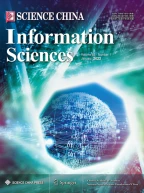Abstract
In this study, quality of experience (QoE)-driven resource allocation for multi-applications in Internet protocol (IP)-based wireless networks is studied. Considering that the mean opinion score (MOS) summation maximization problem is not fair to satisfy heterogeneous users’ QoE with various mobile applications, we apply multi-objective optimization method to maximize each user’s MOS utility. At the beginning of this work, the relationship between MOS utility and user transmission rate for three multimedia applications, that is, File Download, Internet Protocol Television, and Voice over Internet Protocol are discussed. However, the relations under diverse evaluation models are quite different and users in various mobile applications have different requirements, which make the optimization problem difficult to solve. To meet each user’s minimum rate requirement, the idea of Nash bargaining solution is applied in the Hungarian-based subcarrier assignment problem. Then to simplify the power allocation problem, the concept of equivalent channel is introduced. Further by applying the tolerance membership function, we develop a fuzzy Max-Min decision model for generating an optimal power allocation solution. Simulation results demonstrate the satisfying characteristics of the proposed algorithm in terms of MOS utility and average data rate.
Similar content being viewed by others
References
Zhang X, Zhang J, Huang Y, et al. On the study of fundamental trade-offs between QoE and energy efficiency in wireless networks. Trans Emerg Tel Tech, 2013, 24: 259–265
Song W, Tjondronegoro D. Acceptability-based QoE models for mobile video. IEEE Trans Multimedia, 2014, 16: 738–750
Zhou L, Yang Z, Wen Y. Resource allocation with incomplete information for QoE-driven multimedia communications. IEEE Trans Wirel Commun, 2013, 12: 3733–3745
Khan A, Sun L, Jammeh E, et al. Quality of experience-driven adaptation scheme for video applications over wireless networks. IET Commun, 2010, 4: 1337–1347
Wamser F, Hock D, Seufert M, et al. Using buffered playtime for QoE-oriented resource management of YouTube video streaming. Trans Emerg Tel Tech, 2013, 24: 288–302
Moura N T, Vianna B A, Albuquerque C V N, et al. MOS-based rate adaption for VoIP sources. In: Proceedings of IEEE International Conference on Communications, Glasgow, 2007. 628–633
Saul A. Simple optimization algorithm for MOS-based resource assignment. In: Proceedings of IEEE Vehicular Technology Conference, Singapore, 2008. 1766–1770
Thakolsri S, Kellerer W, Steinbach E. Application-driven cross layer optimization for wireless networks using MOS-based utility functions. In: Proceedings of 4th International Conference on Communications and Networking in China, Xi’an, 2009. 1–5
Sacchi C, Granelli F, Schlegel C. A QoE-oriented strategy for OFDMA radio resource allocation based on min-MOS maximization. IEEE Commun Lett, 2011, 15: 494–496
Zhou L, Wang X, Tu W, et al. Distributed scheduling scheme for video streaming over multi-channel multi-radio multi-hop wireless networks. IEEE J Sel Areas Commun, 2010, 28: 409–419
Maciel T F, Klein A. On the performance, complexity, and fairness of suboptimal resource allocation for multiuser MIMO-OFDMA systems. IEEE Trans Veh Technol, 2010, 59: 406–419
Kelly F. Charging and rate control for elastic traffic. European Trans Telecommun, 1997, 8: 33–37
International Telecommunication Union. Perceptual evaluation of speech quality (PESQ): an objective method for end-to-end speech quality assessment of narrow-band telephone networks and speech codecs. ITU-T Recommendation P.862. 2001
Srisakul T, Shoaib K, Eckehard S, et al. QoE-driven cross-layer optimization for high speed downlink packet access. J commun, 2009, 4: 669–680
Zhang Z, Wei H, Long K. On the designing principles and optimization approaches of bio-inspired self-organized network: a survey. SCI China Inf Sci, 2013, 56: 071301
Hong H, Wang D, Yang J. A framework for improving uniformity of parameterizations of curves. SCI China Inf Sci, 2013, 56: 108101
3GPP. Typical examples of radio access bearers (RABs) and radio bearers (RBs) supported by universal terrestrial radio access (UTRA). 3GPP TR 25.993. 2012
Han Z, Ji Z, Liu K J R. Fair multiuser channel allocation for OFDMA networks using Nash bargaining solutions and coalitions. IEEE Trans Commun, 2005, 53: 1366–1376
Zhu H, Wang J. Chunk-based resource allocation in OFDMA systems. Part I: chunk allocation. IEEE Trans Commun, 2009, 57: 2734–2745
Osman M S, Abo-Sinna M A, Amer A H, et al. A multi-level non-linear multi-objective decision-making under fuzziness. Appl Math Comput, 2004, 153: 239–252
Steuer R E, Choo E U. An interactive weighted Tcheby cheff procedure for multiple objective programming. Math Program, 1983, 26: 326–344
3GPP. Further advancements for E-UTRA physical layer aspects. v9.0.0. 3GPP TR 36.814. 2010
Author information
Authors and Affiliations
Corresponding author
Rights and permissions
About this article
Cite this article
Fei, Z., Xing, C. & Li, N. QoE-driven resource allocation for mobile IP services in wireless network. Sci. China Inf. Sci. 58, 1–10 (2015). https://doi.org/10.1007/s11432-014-5163-z
Received:
Accepted:
Published:
Issue Date:
DOI: https://doi.org/10.1007/s11432-014-5163-z
